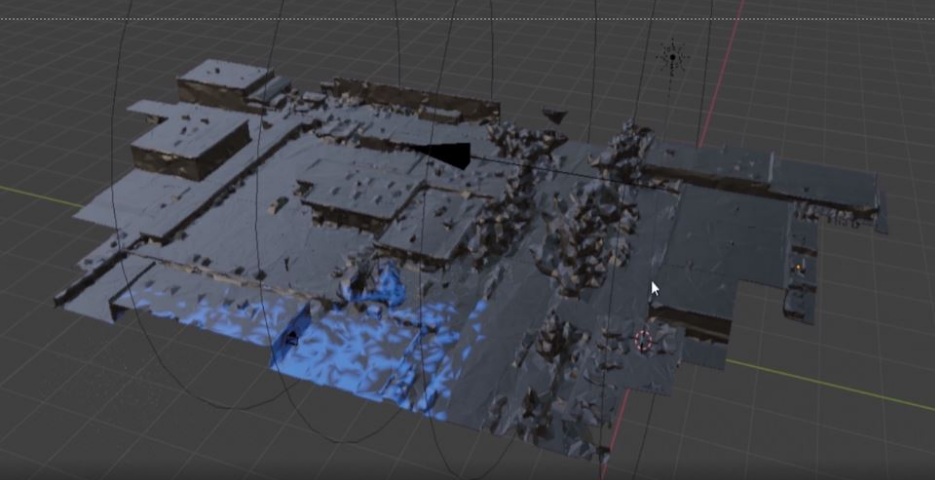Fall Newsletter 2020
Fall 2020
Quarterly Newsletter and Updates
Mosquitoes and Wildfire

In the Bay Area, we had 30 consecutive days of Spare the Air alerts from mid-August to mid-September due to the hundreds of wildfires throughout the state. With all the smoke, you might be wondering how it affects mosquito behavior. While a small amount of smoke can repel mosquitoes for a short time due to their natural aversion to fire, mosquitoes can live anywhere with stagnant water, including burnt land. Not only do wildfires disrupt the lives of residents living in their paths, but they also disrupt mosquito abatement efforts. During a wildfire, access to mosquito breeding sites may be limited, mosquito fish and other natural predators might not survive, and land that has been managed specifically to decrease breeding sites can become waterlogged. Added to that while wildfires can destroy homes, they rarely destroy two major water sources for mosquitoes: pools and septic tanks. When firefighting efforts occur in inhabited areas, pools and septic tanks can fill with water and debris, making an ideal breeding site for millions of mosquitoes. After the 2018 Camp Fire in Paradise, according to the Butte County Mosquito and Vector Control District, the following spring saw a massive amount of abandoned sites due to the fire. Napa County Mosquito Abatement District reported an increase in mosquitoes found in rotted out trees, ponds and puddles that would have normally been absorbed by plant life before the Carr Fire in 2018. Both districts had to pour additional resources and person hours into aggressive abatement efforts in the years after the fires. Learning from these and other fires, mosquito districts should prepare for additional mosquito breeding in areas that receive fire damage.
Intro to Public Outreach Coordinator Judi Pierce

If you called into the office recently, you may have heard a new voice. Judi Pierce started at the District in late July as the Public Outreach Coordinator. This role will focus on increasing communication with underserved communities and enhancing our in-house evaluation efforts. Additionally, she will build a school education program for elementary schools focused on the mosquito life cycle, to educate kids on what they can do to limit mosquito breeding in their neighborhoods. Before joining ACMAD, Judi had years of experience as a health educator both with Alameda County Public Health Department, and at the University of Washington. Most recently she was the Manager of Wellness at Mills College where she led health programming and founded the food pantry. Judi is excited to join ACMAD in the new role, and in her spare time she enjoys bicycling with her son and husband. Welcome Judi!
Coming soon...
.png?ixlib=rb-1.1.0&w=2000&h=2000&fit=max&or=0&s=018247e86cc2547692c44b58e00ee1de)
How do bikes further mosquito abatement efforts in Alameda County? Read more in our next newsletter to find out!
A1 Mister Modeling

Last year Vector Scientist Miguel Barretto and Lab Director Eric Haas Stapleton, PhD attended a presentation that piqued their interest and ultimately inspired a new technology. During a presentation from Placer Mosquito and Vector Control District, Miguel and Eric were reminded that multiple factors will affect how misting larvicide treatments will travel and move through an application site. Since our District has newly acquired an A1 Super Duty mist blower, the pair thought it would be helpful if they could track exactly how the wind moves during each application to determine if there is the correct amount of treatment in all areas.
While the A1 helps mosquito control efforts by applying a fine mist over a land area, currently the only way to be sure the mist sprayed the entire zone is by spot checking areas. Miguel developed a computer model which combines information about wind speed and wind direction to predict mist behavior. With the new model, ACMAD would be able to know if the entire targeted area was covered in a matter of hours. By understanding the wind flow during an A1 application, they can view where the tiny particles moved and landed. Through the model, they can identify gaps with treatments, which allows our Vector Biologists to go in and conduct spot treatments, rather than re-releasing additional mist in the entire area.
The ability to conduct limited spot treatment aligns with our goal of limited intrusion, especially in protected areas such as the salt marsh, or hard to reach densely populated urban areas. When reflecting on this learning process, Miguel remarked that the movement of particles is not intuitive, because they are so small. Larger particles would fall in place faster, but the nature of the A1 mister allows particles to dissipate into larger areas, making accurate modeling more necessary. Miguel and the team will continue to fine tune the model, and they look forward to writing a paper on their work in the future.
Announcement
The City of Albany was recently added to the District. Residents can now request services and will see ACMAD vehicles and employees monitoring and treating the area.
West Nile Virus

Our laboratory continues to test suitable dead birds for West Nile virus (WNV). So far this year we have found 3 WNV positive birds and no WNV positive mosquitoes. If you come across a dead bird please report it online at www.westnile.ca.gov.
While the Fall months typically lead to a decrease in WNV activity, mosquitoes can breed all year long in the Bay Area so proper precautions to avoid mosquito breeding should always be taken. Now is a great time to check for standing water in your yard and drain or cover anything that will hold water longer than 4 days. Visit our backyard checklist to see common places where mosquitoes breed. It is also important to note that WNV has been found in other counties in California. If you will be spending time outdoors, especially during peak mosquito biting times like dusk and dawn, wear insect repellent on exposed skin and long, loose-fitting clothing to prevent mosquito bites. Use an insect repellent that contains DEET, Picaridin, IR3535, or oil of eucalyptus.
